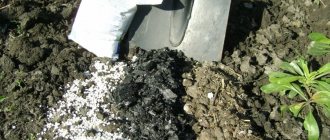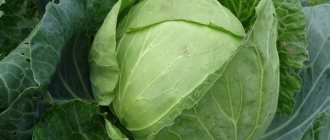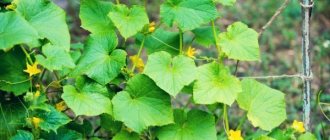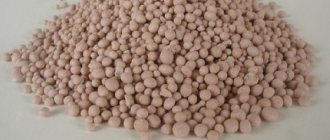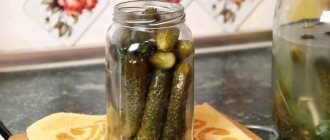Useful preparations for plants can be bought not only at the hardware store.
Some cheap pharmaceutical products are excellent for feeding and stimulating the growth of vegetable and berry crops. Dear readers!
For you, we have created communities on social networks in which useful articles and interesting ideas are published several times a day! Subscribe and receive useful content in a convenient format! Among them is succinic acid. Today we want to tell you what this product is for and how it should be used.
Why do tomatoes and cucumbers need succinic acid?
So, first of all, succinic acid is a growth stimulant. The drug can be used at any time: from pre-sowing seed treatment to planting seedlings and treating adult plants.
Additional advantages of succinic acid are:
- the ability to enhance chlorophyll synthesis processes;
- stimulation of the vital activity of microorganisms;
- prevents nitrates from accumulating in the soil;
- increases plant resistance to unfavorable environmental conditions;
- strengthens the general immunity of plants;
- strengthens the root system, stems and leaves;
- increases the absorption of other microelements.
ON A NOTE. Interestingly, it is almost impossible to overfeed plants with succinic acid. Plants themselves regulate the level of microelement intake.
Boron deficiency in tomatoes
The microelement boron takes an active part in plant development. Through its action, immunity to pests and diseases is formed. How to determine boron deficiency in tomatoes? And everything is very simple
You just need to pay attention to the tomato bush
Rapid tissue breakdown occurs and the affected leaves of the upper rows can be identified without much effort. The leaves also begin to curl from the top to the base. Each affected leaf will have brown or even black veins. And if you try to twist the affected leaf, it will definitely break.
Not only the leaves, but also the stem react to a lack of boron. It starts to turn black. New leaves from the bottom row will grow with brittle bases, after which they will most likely fall off. You will see brown spots on the fruits. All this indicates to the gardener that a serious problem has arisen that needs to be eliminated without delay. You need to prepare a special solution of boric acid and treat the tomatoes.
What useful elements does it contain?
Succinic acid is a natural product that is produced by all living organisms.
Industrially, it is produced as a white powder similar to salt or sugar. You can also find the drug in tablet form.
Succinic acid does not contain chemical impurities. It contains sugar, potato starch, talc, calcium stearate and aerosil.
As you can see, this is an exclusively natural product that is more suitable for organic farming than anything else.
Recommendations from gardeners
Succinic acid has a positive effect on vegetable and garden crops and promotes the active growth of home flowers only if used correctly and a number of rules are followed.
- To increase germination, the seed is soaked in 1% liquid for 24 hours. Then they are dried and sown.
- To ensure rapid engraftment, seedlings are kept in the solution for at least an hour. Then they are dried and planted in the beds.
- Acid promotes shoot growth. Plants are sprayed with a weak solution of amber at intervals of 2 weeks.
- To quickly recover from an illness, gardeners recommend watering or spraying the crop with a highly concentrated solution. 0.25 grams of the substance are diluted per liter.
Treatment with succinic acid in compliance with the dosage has a positive effect on vegetable seedlings. Fertilizer stimulates the active growth of seedlings, increases their immunity, and promotes the formation of strong plants.
How to use succinic acid as a fertilizer for tomatoes and cucumbers
Let's look at how to use this product as a top dressing for tomatoes and cucumbers.
Tomatoes love succinic acid. After processing it, they produce more buds. Tomatoes can be watered and sprayed.
Typically, for both cultures the following scheme is used:
- 1 feeding is carried out at the stage of transplanting seedlings to a permanent place;
- 2 fertilizing before flowering;
- 3 feeding during flowering;
- 4 feeding after flowering.
If necessary, you can spray it a couple more times, but then you need to reduce the concentration of the active substance.
ON A NOTE. Experts advise using root dressings with succinic acid in the evening.
Preparation and use of the solution
As mentioned above, a solution of succinic acid is suitable for treatment at any stage of plant development. First, the seed is soaked in it, then the seedlings are treated. When transplanting, plants are stimulated to grow by watering the rhizomes. And after hypothermia, the foliage is treated.
How to use succinic acid for processing
The drug can be used not only for root feeding, but also for leaf treatment. Usually for this purpose the concentration is reduced.
To prepare a working solution for spraying, the tablet is ground into powder and dissolved in a small amount of water. Next, the volume of liquid is adjusted to the working value and the plants are treated.
As always, spraying should be done in the morning or evening. Preferably in cloudy weather, but without rain. All these requirements will improve the digestibility of the product by plants.
Effective fertilizers for cucumbers
The most commonly used organic materials for cucumbers are an infusion of slurry (1:4), a solution of mullein (1:10) or horse manure (1:12), a fermented infusion of bird or rabbit droppings (1:20), green fertilizer from unseeded weeds and cut grass (1:3). These solutions contain a sufficient amount of nitrogen substances, plus all the necessary salts and a balanced composition of microelements, as well as humic acids.
And from mineral compositions, either a mixture of mono fertilizers is used, for example, urea, superphosphate and potassium sulfate, or complex fertilizers containing nitrogen, phosphorus, potassium and other macro and microelements, preferably in the form of chelates (“Azophoska humatized”, “Partner standard” ). But it is best to use specialized mineral and organomineral fertilizers with humates for cucumbers, developed taking into account the specific mineral nutrition of pumpkin crops, for example, “RASTI-KA”, “Malyshok for cucumbers” or “Kristalon cucumber”.
A highly productive and environmentally friendly mineral fertilizer with microelements for cucumbers is ordinary plant ash, however, the product does not contain a nitrogen component, so aqueous extracts from the ash are applied at the root and along the leaf a week after using nitrogen fertilizing, for example, a solution of nitroammophosphate, ammonium nitrate or ammonium sulfate .
Watering seedlings at the root with nutrient solutions begins at the stage of growing seedlings. In addition to root feeding, experienced vegetable growers always treat the plants with solutions of macro- and microfertilizers on the leaves, thus preventing mineral starvation of seedlings in this simple way. Foliar feeding is often combined with measures to protect seedlings from diseases and pests, using insecticides, fungicides and microfertilizers in tank mixtures.
Application of succinic acid for seedlings
You can use succinic acid already at the stage of growing seedlings. Let's look at how to prepare a nutrient solution for tomato and cucumber seedlings.
How to use tomatoes for seedlings
Tomato seedlings love spraying with a solution of this drug. To prepare the working fluid, you need to dissolve 2 grams in 1 liter of water.
Tomatoes should be sprayed evenly both above and below the leaves.
How to use for cucumber seedlings
But cucumber seedlings prefer watering with this product. The working solution is prepared from 5 grams of the substance and 2 liters of water.
Feeding tomato seedlings
Friendly seedlings growing in a greenhouse or in containers require constant care. Lighting and temperature support are not enough for the seedlings to strengthen and develop normally. Therefore, an amber preparation comes to the aid of the gardener.
Succinic acid for tomato seedlings is used only by the root method. Feed the tomatoes after abundant watering so as not to burn the roots. The fertilizer is prepared according to the following recipe:
- 2 g of acid is dissolved in a liter of warm water;
- The concentrated liquid is diluted in 20 liters of water.
Fill a watering can with the solution prepared for watering and direct a thin stream under the plants for gradual absorption into the soil. Leaves and stems are not watered with liquid so as not to cause burns. Such events are carried out in greenhouses, greenhouses and in open garden beds only in the evening.
How to make a solution for adult tomatoes
Let's look at how to prepare a recipe for feeding already large tomatoes.
Feeding when planting seedlings
When you transfer the seedlings to a permanent place, after planting them, feed them with the following composition. Dissolve 2 grams of the drug in a liter of water. Water the planted seedlings and sprinkle the leaves. This composition will help the tomatoes take root better and withstand a stressful situation.
Feeding during flowering
Once the tomatoes bloom, they can be processed for 3 weeks straight. To do this, dissolve 1 g of the substance in 1 liter of water.
The product can be watered or sprayed on plants. A total of 3 treatments are done.
Prophylactic solution
Recipe: 2 grams of powder per 1 liter of water. Equally suitable for both spraying and root watering.
This composition should be used approximately once a month if the tomatoes are generally doing well.
Use on plants
Since the substance is contained in all microorganisms, it can be used to improve the growth of all plants. But the concentration of crystals is different.
Seed preparation
To prepare seeds for planting, use a 0.2% solution with water. To prepare a solution for soaking seeds, you need to dilute 2 grams of the substance in 100 grams of water, then warm a liter of water to room temperature and add it to the mixture. You should get 1 liter of mixture for impregnating the seed material.
Pre-sowing preparation can also be carried out with potato tubers. The solution is sprayed onto the potatoes and left for several hours so that the acid is absorbed.
Preparing seedlings
To strengthen the seedlings before transplanting to a permanent place of growth, the granules are diluted as follows: 2.5 grams are diluted in 1 liter of water at room temperature. Before planting, water the seedlings with this solution; after an hour, the seedlings need to be planted in the ground in a permanent place of growth. Another way to help seedlings is to spray the mixture with a spray bottle.
Preparing the root system
To help small cucumbers take root in a new place and form a powerful root system, the plants are shed with a 0.2% amber solution to a depth of 15–30 centimeters. This depends on the age of the plants and planting depth. The procedure is carried out once a week.
See also
Growing, characteristics and description of bush cucumber varieties for open groundRead
Restoring cucumbers after hypothermia
If the green mass is sick and wilted after suffering from hypothermia or drought, it can be revived with the help of amber. To do this, spray all damaged parts of plants with a 0.2% solution; the procedure must be repeated once every two or three weeks until a positive result is obtained.
Recipes for feeding with succinic acid for adult cucumbers
Cucumbers can also be processed several times.
When you plant seedlings, water the seedlings with a solution of boric acid (2.5 g per 1 liter). The next 2 feedings can be done after 1 and 2 weeks, respectively. The recipe is the same.
Dissolve 2 grams in a bucket of water and process the cucumbers leaf by leaf in case of unfavorable environmental conditions (heat or cold).
Also, for prevention purposes, you can water the bushes with a liquid prepared from 2 grams of product and 10 liters of water.
Use the product correctly
| Treatment of planting material before sowing Dilute 2 g of succinic acid in 100 g of warm water. If you have tablets, it is better to crush them first to make the work easier. Stir until the crystals are completely dissolved and there should be no sediment at the bottom. Add warm water to make 1 liter in total . Soak the seeds in the resulting solution for about 12 hours; the easiest way is to leave them overnight before sowing | |
| Spraying seedlings during cultivation Dilute 2 g of product in a liter of water. It’s more convenient to do it as described above - dilute it in a small amount of water and then add the rest. Pour the solution into the spray bottle . Treat the plants generously, trying to cover the leaves on both the top and bottom sides. Carry out work only in the morning or evening, during the day it is dangerous due to burns on the leaves | |
| Watering seedlings You can make a solution for seedlings. Dosage - 2.5 g per liter of water. It is best to use rain or settled water. Ideally, pour it into containers and keep it for 2-3 days. Water at the roots in the evening . Replace regular watering with a solution of succinic acid. Such treatments can be carried out once every two weeks, alternating watering and spraying. | |
| Watering when planting in a permanent place A solution is prepared at the rate of 2 g per liter of water. You need a lot of liquid, so mix a bucket or even more. Before feeding, you need to estimate the approximate amount of water that will be needed. Watering is carried out immediately after planting cucumbers in a greenhouse or open ground . Here it is important to wet the soil to a depth of 20-30 cm, so the liquid pours out copiously. It is better to add it in large portions so that it is absorbed around the root system and does not spread over the surface | |
| Treatment of damaged plants If the cucumbers have become hypothermic or, on the contrary, have suffered from the heat, then you need to treat them with a solution of succinic acid as soon as possible. A 2% solution is made, with which the plants are generously treated on all sides. Spraying is carried out in the evening or in the morning so that the liquid is absorbed before the hottest period . Treatments are repeated every 10 days until the plants have fully recovered from the damage. | |
| Preventive spraying of adult plants A dosage of 2 g per liter of water is used. Use liquid that has been left standing for at least a day. Rainwater is excellent for such purposes. You can treat both plants and the soil underneath them. It is best to spray in the evening, since at night cucumbers most actively absorb moisture and nutrients . The frequency of treatment is once every 2-3 weeks. This is quite enough for the plants to actively develop and bear fruit abundantly. |
Advantages and disadvantages
Now let's talk about the pros and cons of this product.
The advantages of succinic acid include its high efficiency, low cost, and harmlessness to humans, animals and insects.
Succinic acid generally has a beneficial effect on plants, increases immunity, and gives them strength. The shoots become plump and the root system is strong.
The drug has very few disadvantages.
For example, the finished working solution is poorly stored. Over the course of 3 days, it gradually loses all its beneficial properties. Therefore, try to prepare the right amount of fertilizer.
The drug also increases the acidity of the soil. If you add it uncontrollably, then you will need to add ash or dolomite flour.
Pharmacy biostimulant
succinic acid is a completely natural preparation. It is produced in all living organisms that can breathe air. This substance affects all chains of the plant, causing it to more voraciously absorb microelements.
In production, such a substance is obtained during the processing of amber. This drug is odorless and tastes similar to citric acid. It dissolves well in water and is suitable not only for plants, but also for humans.
There are different forms of release; the drug in capsules is mainly used in agricultural technology. Succinic acid in tablet form is used as a dietary supplement for humans.
Precautions for use
Be sure to use personal protective equipment to protect your eyes and mucous membranes from exposure to the powder.
Keep the product out of the reach of children. Although the product is harmless, an allergic reaction may occur. Therefore, generally keep any medications away from children.
In case of poisoning, consult a doctor.
If the solution gets into your eyes, rinse them with plenty of warm water. If the condition worsens, consult an ophthalmologist immediately.
How to feed tomatoes in a greenhouse
If you want to grow a rich harvest of tomatoes in a greenhouse, be sure to use succinic acid. If you notice drooping leaves, hurry to feed the bushes with a weak amber solution.
If you doubt the effect of this drug, first feed a couple of bushes, and then water the entire garden bed.
The powdered drug should be diluted as follows:
- Dilute 1 gram of powder in a glass of warm water (the powder simply will not dissolve in cold water),
- then add 800 ml of water,
- shake up
- then immediately treat the bushes.
The solution can be stored for no more than a day, so it is recommended to use it quickly. It has been noticed that plants take as many substances as they need, so it is impossible to overfeed them with amber. However, the dosage must be observed in any case so as not to harm the soil.
It has been noticed that tomatoes respond to watering with a biological product with a large number of buds. For the ovary, a certain feeding scheme is used:
- When transplanting into a greenhouse.
- Before flowering for fruit set.
- The next feeding is during flowering.
- Final feeding after flowering.
A weak solution can be sprayed again during the season if the plants begin to lose vigor.
Answers to frequently asked questions
Can the product be used on cucumbers and tomatoes?
Yes, and at all stages of growth and development.
What is succinic acid used for?
It strengthens the immune system, improves the root system, stimulates the formation of buds and ovaries.
Are there any contraindications?
We can say no. Succinic acid is a natural remedy. A slight overdose will not cause any harm, since the plants themselves regulate the required amount of the microelement.
How to apply fertilizer?
You can water the plants at the roots, or you can spray them.
Processing cucumbers
Succinic acid for cucumbers is used throughout the entire growing and fruiting season. It stimulates the formation of ovaries, and not being a fertilizer, it does not tend to accumulate in fruits.
To ensure that the seeds have maximum germination, they are soaked in succinic acid. In subsequent periods, all leaves and vines of cucumbers are processed.
Where the temperature regime is not favorable for young seedlings, succinic acid will help cucumbers cope with acclimatization.
